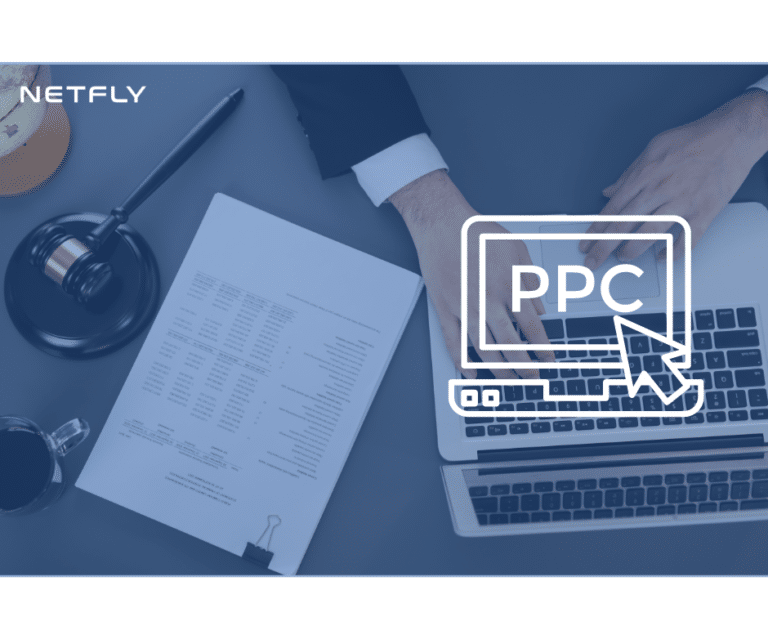To craft a brand voice that resonates with legal clients, start by deeply understanding your audience through detailed client personas. Pinpoint their demographics and psychographics to address their needs directly. Define your brand values clearly to enhance authenticity and trustworthiness. Develop a unique tone that aligns with core values and client expectations. Maintain consistency in messaging across platforms to solidify brand identity. Communicate with clarity, using simple language to avoid misunderstandings. Capture attention through storytelling, building emotional connections via relatable narratives. Continuously evaluate and adapt your tone based on feedback and industry trends. Discover the key strategies to elevate your brand voice further.
Key Takeaways
- Develop detailed client personas encompassing demographics and psychographics to tailor the brand voice to client needs.
- Define and communicate clear brand values to differentiate legal services and build trust with clients.
- Maintain consistent messaging across platforms to strengthen brand identity and enhance trust.
- Use plain language and structure in communication to ensure clarity and avoid misunderstandings.
- Incorporate storytelling to create emotional connections and make legal processes relatable and memorable.
Understanding Your Audience
When you’re creating a brand voice for legal clients, understanding your audience is crucial. Without this, your messaging won’t resonate effectively. Start by developing detailed client personas. These personas should encompass everything about your ideal clients by leveraging both demographics and psychographics. Demographics are straightforward: age, gender, income level, and occupation. Psychographics delve deeper into what motivates your audience emotionally and psychologically—beliefs, values, and lifestyle choices.
Empathy mapping is your next step. It helps you get inside your client’s mind, understanding their needs and pain points. Ask yourself: what are they thinking, feeling, and hearing? This method allows you to tailor your brand voice to speak directly to their concerns and aspirations. The goal is to make your legal services feel like a customized solution, not a generic offering.
When you understand who your clients are and what drives them, you can craft a brand voice that speaks directly to them. This voice should reflect empathy and authority, positioning your legal services as not just knowledgeable but also deeply attuned to their unique needs. Precision in your messaging fosters trust, encouraging potential clients to choose your firm over others.
Defining Your Brand Values
To truly differentiate your legal services, you must, above all else, define your brand values with precision. These values are the foundation of your firm’s identity, driving authenticity and credibility in every client interaction. Begin by identifying the core principles that set your practice apart. Ask yourself: What do you stand for? Is it integrity, client-focused solutions, or relentless advocacy? Once identified, these values should permeate every aspect of your practice, from client communications to business operations.
Your brand values are pivotal in establishing trustworthiness. Clients seek legal partners they can rely on, and your values should reflect that trustworthiness. By consistently demonstrating these principles, you build a reputation that clients not only respect but relate to. Relatability is key; clients should see themselves and their values reflected in your firm, creating a connection that goes beyond mere transactions.
Moreover, clearly defined brand values enhance your firm’s relatability. Clients are more likely to engage with a firm that mirrors their own beliefs and expectations. By articulating these values with clarity and precision, you guarantee that your message resonates deeply, fostering long-term relationships built on mutual trust and respect.
Crafting a Unique Tone
To craft a unique tone for your legal brand, start by defining your core values clearly, as these form the foundation of your communication. Align this tone with your client’s expectations to guarantee it resonates and builds trust. Consistency in your messaging strategy will reinforce your brand’s identity and make your voice recognizable across all platforms.
Define Your Core Values
At the heart of crafting a unique tone for your legal brand lies a clear definition of your core values. These values serve as the foundation for your brand’s authentic representation and guarantee your message remains consistent and trustworthy. Understanding and articulating your core beliefs helps clients connect with your practice on a deeper level, fostering long-term relationships built on mutual respect and understanding.
To define your core values effectively, follow these steps:
- Identify Your Core Beliefs: Reflect on what truly matters to your practice. Is it integrity, client satisfaction, or perhaps innovation? These beliefs should guide every decision and interaction.
- Ensure Genuine Representation: Your core values should be a true reflection of your firm’s ethos, not just buzzwords. Authenticity builds credibility and trust, essential elements in the legal field.
- Communicate Consistently: Once defined, your core values should permeate every facet of your communication strategy. Whether through your website, social media, or face-to-face interactions, guarantee your tone consistently echoes these values.
Align With Client Expectations
With your core values clearly defined, the next step is aligning with client expectations to craft a unique tone for your legal brand. Understanding what your clients anticipate when they interact with your firm is essential for effective client engagement. Clients in the legal sector often look for professionalism, clarity, and empathy. As a result, your brand voice should consistently reflect these qualities to meet their expectation alignment.
Start by researching your target audience. What are their common concerns and values? Do they prefer a formal or conversational tone? By aligning your tone with these insights, you can guarantee your brand is both relatable and trustworthy. It’s about striking the right balance between being authoritative and approachable.
Consistent Messaging Strategy
Establishing a consistent messaging strategy is essential for crafting a distinctive tone that resonates with your legal audience. Your brand identity hinges on the clarity and consistency of your voice, guaranteeing that every message aligns with your core values and goals. To achieve voice consistency, you must be intentional in every aspect of your communication. Here’s how you can do it:
- Define Your Brand Voice: Start by identifying the key characteristics that make up your brand identity. Is it authoritative, approachable, or perhaps a blend of both? By clearly defining your voice, you create a framework that guides every piece of content.
- Create a Style Guide: Develop a detailed style guide that outlines the tone, language, and messaging guidelines. This document will serve as a reference for your team, ensuring everyone is on the same page and maintains voice consistency across all platforms.
- Train Your Team: Consistency requires that everyone involved in communications understands and embodies your brand voice. Conduct training sessions to reinforce these principles and provide regular feedback to guarantee adherence.
Consistency Across Platforms
To establish a strong brand voice for your legal clients, you must maintain a uniform messaging strategy across all platforms. Consistency in tone and language not only strengthens brand identity but also builds trust with your audience. By aligning your messaging across various channels, you create a cohesive and recognizable presence that resonates with potential clients.
Uniform Messaging Strategy
A uniform messaging strategy is essential for maintaining consistency across platforms, ensuring your legal brand presents a cohesive identity and builds trust with your audience. By focusing on brand consistency and message alignment, you create a recognizable and reliable presence that resonates with clients. This approach reinforces your brand’s authority and makes it easier for potential clients to remember and choose your services.
To achieve this, consider the following steps:
- Develop a Core Message: Create a central message that encapsulates your brand’s values and mission. This serves as the foundation for all your communications, ensuring each platform reflects the same core principles.
- Standardize Visual Elements: Use consistent logos, color schemes, and typography across all channels. This visual uniformity enhances recognition and solidifies your brand’s identity in the minds of your audience.
- Implement a Content Calendar: Schedule content across platforms to maintain a steady and consistent flow of communication. This helps in reinforcing your message and keeping your audience engaged.
Cross-Platform Tone Alignment
Building on the foundation of a uniform messaging strategy, aligning your brand’s tone across platforms guarantees a consistent and trustworthy voice that’s crucial in the legal industry. When you’re dealing with clients seeking legal advice, any discrepancy in tone can erode trust and create confusion. This is why tone consistency in your brand messaging is essential. Whether it’s an email, a social media post, or your website content, your clients should feel they’re interacting with the same authoritative and reliable entity.
Start by establishing clear guidelines for your brand’s tone. Define the language, style, and personality traits that reflect your firm’s values. Ensure these guidelines are communicated across your team and adhered to in all communications. This doesn’t mean every platform must sound identical—each has its nuances. However, your core message and tone should remain recognizable and aligned.
Writing With Clarity
When crafting legal documents or communications, clarity is paramount to make certain that your message is understood without ambiguity. Achieving clear communication and concise messaging is essential in the legal field, where precision can make all the difference. To write with clarity, follow these straightforward yet impactful steps.
- Use Plain Language: Legal jargon can often confuse clients. Simplify your language to make sure that everyone, regardless of their legal expertise, can grasp your message. Avoid unnecessary complexity to foster clear communication.
- Be Direct and Specific: Avoid vague statements. Instead, provide exact details and instructions. This helps prevent misunderstandings and guarantees your audience knows exactly what actions to take or what information is being conveyed.
- Prioritize Structure and Organization: Presenting information in a logical order aids comprehension. Use headings, bullet points, and numbered lists to break down complex ideas into manageable sections. This approach enhances clarity and guides readers through your content.
Engaging Through Storytelling
While clarity forms the backbone of effective legal communication, engaging through storytelling brings an added dimension that captures attention and fosters connection. A well-crafted story isn’t merely a string of events—it’s a strategic tool to create compelling narratives that resonate with your clients. By weaving facts into stories, you offer more than information; you provide context and emotion, making the legal journey relatable and memorable.
Imagine your client’s case as a narrative where they’re the protagonist facing challenges. Use this framework to illustrate complex legal processes in a way that speaks directly to their experiences. This approach not only simplifies intricate details but also builds an emotional connection, making your legal services seem indispensable.
Crafting compelling narratives requires an understanding of your audience’s concerns and aspirations. Ask yourself: What are their fears? What outcomes do they desire? Answer these questions through stories that demonstrate your understanding and expertise. Remember, storytelling isn’t about embellishment—it’s about authenticity and relevance. By engaging clients with stories that reflect their realities, you’re not just communicating; you’re building trust and loyalty, setting your legal practice apart in a crowded marketplace.
Evaluating and Adapting Voice
To effectively evaluate and adapt your brand voice, start by considering the three core elements: consistency, authenticity, and responsiveness. Consistency ensures your brand voice remains recognizable across all platforms. Authenticity builds trust with your audience, while responsiveness allows you to adjust to changing client needs and expectations. Voice analysis is pivotal in identifying how your current brand voice aligns with these elements. By examining client feedback and engagement metrics, you can pinpoint strengths and weaknesses.
Here’s how to proceed with voice analysis and tone adjustment:
- Conduct Regular Audits: Evaluate communication across all channels. Are your messages consistent, authentic, and responsive? Identify gaps and areas needing improvement.
- Client Feedback: Use surveys or direct conversations to gather insights into how clients perceive your brand voice. Adjust your tone based on these insights to better resonate with your audience.
- Adapt to Trends: Stay updated on industry trends and adjust your tone accordingly. This showcases your brand’s ability to evolve and stay relevant.
Frequently Asked Questions
How Can Humor Be Effectively Integrated Into a Legal Brand Voice?
To integrate humor effectively in your legal brand voice, [CONFIRM] your humor strategy aligns with professional standards. Use light humor to enhance client engagement, making complex topics more relatable, while maintaining credibility and fostering trust.
What Role Does Visual Branding Play in Complementing a Brand Voice?
Visual identity is like a partner dancing in harmony with your tone of voice. It reinforces your message, ensuring clients recognize and trust your brand. Together, they create a cohesive, memorable impression that differentiates you in the legal field.
How Do You Manage a Brand Voice During a Legal Crisis?
During a legal crisis, you’ve got to prioritize crisis communication to maintain client trust. Be transparent, consistent, and empathetic in your messaging, ensuring your brand voice reflects these values. This approach reassures clients and preserves your brand’s integrity.
How Can a Brand Voice Address Diverse Cultural and Language Differences in Clients?
You need to uphold cultural sensitivity and break language barriers by adapting your client communication. Foster brand consistency while recognizing diverse backgrounds, using clear, inclusive language. This approach strengthens trust and enhances your brand’s connection with varied clients.
What Are Best Practices for Training Employees to Embody the Brand Voice?
Imagine mismatched socks, then perfect pairs. Role-playing exercises and workshops align employees with your brand voice. Consistent messaging and regular feedback guarantee everyone speaks fluently. Train thoroughly, and your team will embody the voice authentically and effectively.
Conclusion
Imagine your brand voice as the North Star guiding sailors through turbulent seas. It’s your steadfast beacon, illuminating the path to building trust with legal clients. By understanding your audience, defining your values, and crafting a unique tone, you’re setting sail with a compass of consistency and clarity. Engage them through storytelling, and be prepared to adjust your sails as needed. With this blueprint, your voice becomes the lighthouse that guarantees safe harbor in the competitive legal landscape.










